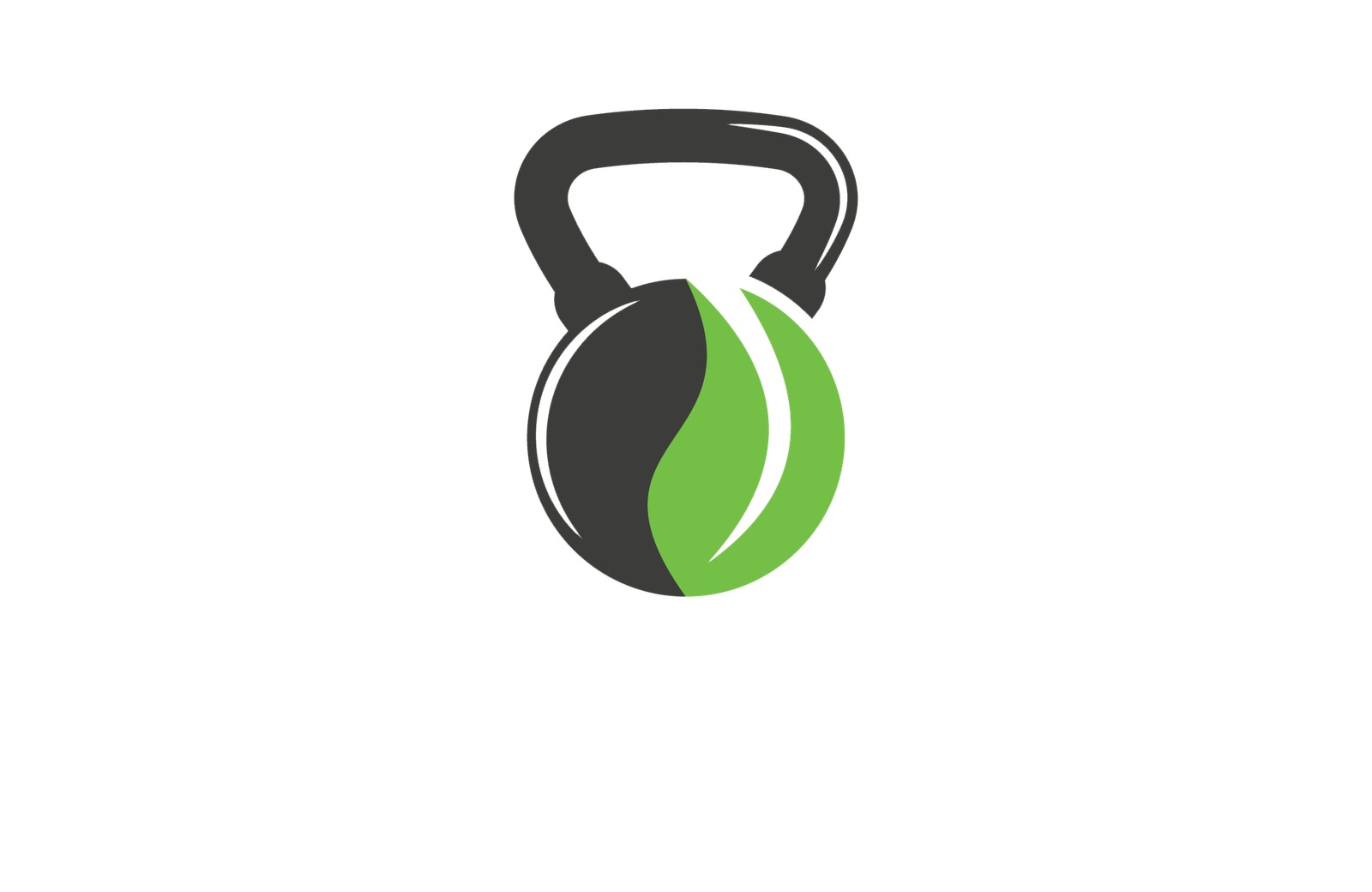Don't miss our holiday offer - 20% OFF!

Nutrition Apps to Support Your Fitness Goals
Streamline your fitness journey with cutting-edge nutrition apps that unlock optimal performance, but how do they really work?
We rely on advanced nutrition apps to track our daily food intake, monitor macronutrient balances, and identify areas for improvement, helping us make data-driven decisions to achieve our fitness goals. With features like customizable meal planning, grocery lists, and hydration tracking, these apps provide a holistic approach to nutrition. We can accurately track macronutrients, identify vitamin and mineral deficiencies, and optimize meal timing for peak performance. By leveraging these powerful tools, we're empowered to take control of our nutrition and reach new heights in our fitness journey – and that's just the beginning of what we can accomplish.
Key Takeaways
- Track macronutrient intake accurately with reliable apps, aiming for 2-3g carbs/kg body weight, 1.6-2.2g protein/kg body weight, and 0.5-1g fat/kg body weight.
- Utilize customizable food databases and portion control tracking to verify serving sizes and stay on track with nutrition goals.
- Leverage advanced nutrition apps to create personalized meal plans balancing macronutrient intake, considering age, gender, weight, and activity level.
- Stay motivated with habit tracking, identifying patterns in eating habits, and making data-driven decisions with 100 tracked data points daily.
- Integrate wearable devices to collect valuable data on daily habits, activities, sleep patterns, heart rate, and nutrition data to support fitness goals.
Top Nutrition Apps Reviewed
We've tested and compared the most popular nutrition apps on the market, evaluating their features, user experience, and overall effectiveness in helping users achieve their health and wellness goals. Our thorough review process involved analyzing app comparisons and pouring over user reviews to identify the top performers. We considered factors such as ease of use, nutritional database accuracy, and personalized recommendations. Our findings revealed that some apps excel in certain areas, while others fall short. For instance, some apps offer robust meal planning features, while others provide more accurate macronutrient tracking. By examining user reviews, we gained insight into the apps' real-world effectiveness and identified areas for improvement. Our in-depth analysis enables us to provide readers with a definitive ranking of the top nutrition apps, empowering them to make informed decisions about their health and wellness journey. By cutting through the noise and providing a clear, data-driven assessment, we aim to help readers achieve their fitness goals with confidence.
Macro Tracking Made Easy
One of the most critical components of a successful nutrition app is its ability to accurately track macronutrients, making it easy for users to monitor and adjust their daily intake of carbohydrates, proteins, and fats. By debunking macro myths, we can focus on what really matters – achieving our fitness goals. A good nutrition app should provide a clear picture of our daily macro intake, helping us stay motivated and on track.
Here's how a top-notch nutrition app can help us track our macros:
| Macronutrient | Ideal Daily Intake |
|---|---|
| Carbohydrates | 2-3 grams per kilogram of body weight |
| Protein | 1.6-2.2 grams per kilogram of body weight |
| Fat | 0.5-1 gram per kilogram of body weight |
| Fiber | 25-30 grams per day |
| Water | 8-10 glasses per day |
With accurate tracking, we can identify areas for improvement and make data-driven decisions to reach our goals. By leveraging a reliable nutrition app, we can boost our tracking motivation and finally achieve the results we've been striving for.
Personalized Meal Planning Tools
As we explore personalized meal planning tools, we're excited to examine the key features that make them effective. We're going to look at how these tools balance our macro-nutrient intake, ensuring we're getting the right amounts of protein, carbohydrates, and fats for our specific needs. Additionally, we'll discuss how these tools filter for dietary restrictions, catering to individual preferences and requirements.
Macro-Nutrient Balancing
By analyzing our dietary needs and preferences, advanced nutrition apps can create personalized meal plans that strike a delicate balance of macronutrients, ensuring we're fueling our bodies for peak performance.
To achieve this balance, the apps assess our individual macro needs, taking into account factors such as age, gender, weight, and activity level. They then create customized meal plans that provide the ideal nutrient ratios for our specific requirements. For instance, an athlete may require a higher carbohydrate intake to fuel intense workouts, while a sedentary individual may need a more balanced ratio of protein, fat, and carbohydrates.
Dietary Restriction Filtering
We input our dietary restrictions and preferences into advanced nutrition apps, and they filter out unsuitable foods, guaranteeing our personalized meal plans accommodate our unique needs, whether we're vegetarians, gluten-free, or lactose intolerant. This feature is particularly essential for individuals with food allergies, as it helps us avoid potential health risks. By specifying our dietary requirements, we can trust that our meal plans will be tailored to our needs, sans common allergens like nuts, shellfish, or soy.
Moreover, these apps often provide ingredient substitutions to accommodate our restrictions. For instance, if we're gluten-intolerant, the app might suggest gluten-free alternatives to traditional grains. This level of customization not only safeguards our safety but also expands our culinary horizons. By incorporating dietary restriction filtering into our personalized meal planning, we can confidently explore new recipes and ingredients, knowing that our health needs are being met. With advanced nutrition apps, we're empowered to take control of our dietary needs, and that's a pivotal step towards achieving our fitness goals.
Healthy Grocery Lists Made Simple
As we explore the domain of healthy grocery lists, we're finding that meal planning essentials are vital to getting started. We're identifying the key components of smart grocery lists, which enable us to make informed decisions at the store. By streamlining our approach to healthy food shopping, we're able to make nutritious choices a whole lot easier.
Meal Planning Essentials
When it comes to meal planning, creating healthy grocery lists is a crucial step that sets the foundation for a successful and nutritious eating regimen. We've found that meal planning essentials start with a well-stocked kitchen, which is why we prioritize kitchen organization. By decluttering our pantry and categorizing our ingredients, we can easily identify what we need to restock and what we can use in our upcoming meals. This also helps us stick to our food budgeting goals, as we're less likely to impulse buy or waste food. By planning our meals around what we already have, we can reduce food waste and save money. Additionally, having a organized kitchen space helps us stay focused on our nutritional goals and avoid last-minute, unhealthy takeout options. By taking the time to organize our kitchen and plan our meals, we set ourselves up for success and make healthy eating a sustainable habit.
Smart Grocery Lists
By generating smart grocery lists, we can streamline our meal planning process, ensuring that we purchase only the ingredients needed for our planned meals and avoid unnecessary items. This approach helps us stay on track with our nutrition goals and saves us time and money. With smart grocery lists, we can easily organize our shopping trip by categorizing items by aisle, ensuring that we don't miss anything we need. Additionally, these lists enable us to stick to our grocery budgeting plan, avoiding impulse buys that can quickly add up.
Furthermore, list organization features allow us to prioritize items based on our dietary needs and preferences. We can also customize our lists to accommodate specific dietary requirements, such as gluten-free or vegan options. By having a clear and structured list, we can confidently navigate the grocery store, knowing exactly what we need to buy. In addition, this level of organization not only simplifies our shopping experience but also helps us maintain a healthy and balanced diet.
Healthy Food Shopping
We create healthy grocery lists by focusing on whole, unprocessed foods and avoiding highly processed and packaged items that can hinder our nutrition goals. This approach guarantees we're getting the essential nutrients our bodies need to thrive. When it comes to healthy food shopping, we prioritize planning and organization to make the most of our time and budget.
| Healthy Shopping Tips | Benefits |
|---|---|
| Plan meals and make a list | Reduces food waste and saves money |
| Shop the perimeter of the store | Fresh produce, meats, and dairy are usually located here |
| Buy in bulk and stock up | Saves money and reduces packaging waste |
| Use cashback apps for groceries | Maximizes food budgeting and earns rewards
Food Diary Features Explained
Our food diary features a detailed logging system, allowing us to track everything we eat and drink throughout the day. This thorough food logging system helps us develop healthy habits and identify patterns in our eating habits. By tracking our daily food intake, we can identify areas for improvement and make informed decisions about our nutrition.
Some key features of our food diary include:
- Customizable food database: We can log our favorite foods and create a personalized database for easy tracking.
- Portion control tracking: We can track our serving sizes to verify we're eating the right amounts.
- Meal planning: We can plan our meals in advance to stay on track with our nutrition goals.
- Habit tracking: We can monitor our progress and identify patterns in our eating habits.
Calorie Counting Simplified
Accurately tracking daily caloric intake is a crucial step in achieving our health and wellness goals, and our nutrition app simplifies this process with its user-friendly calorie counting system. With our app, we can easily log our daily food intake and track our calorie consumption, ensuring we're meeting our dietary needs and staying on track with our fitness goals.
| Food Category | Calorie Range | Healthy Options |
|---|---|---|
| Breakfast | 300-400 | Oatmeal with fruits and nuts |
| Lunch | 400-500 | Grilled chicken with quinoa and veggies |
| Snacks | 100-200 | Fresh fruits and carrot sticks |
| Dinner | 500-600 | Baked salmon with brown rice and steamed veggies |
Our app promotes Food Freedom by allowing us to make informed choices about our diet, without feeling restricted or deprived. By practicing Mindful Eating, we're more aware of our hunger and fullness cues, and we're able to develop a healthier relationship with food. With our app, we can achieve a balanced diet, reach our fitness goals, and maintain a healthy lifestyle.
Nutrition Insights and Analytics
One hundred data points are tracked daily, providing unparalleled insights into our eating habits and nutritional patterns. This wealth of information empowers us to make informed decisions about our diet, helping us identify areas for improvement and optimize our nutrition. With advanced analytics, we can pinpoint potential issues, such as nutrient deficiencies or food sensitivities, and take corrective action.
Some key insights we can gain from these analytics include:
- Macronutrient imbalance: Identifying whether we're consuming too many carbs or not enough protein to support our fitness goals.
- Vitamin and mineral deficiencies: Detecting potential shortages of essential nutrients, such as vitamin D or iron, and adjusting our diet accordingly.
- Food sensitivity tracking: Monitoring our body's response to certain foods, helping us avoid those that may be causing discomfort or hindering our progress.
- Meal timing and frequency: Optimizing our eating schedule to facilitate our bodies receiving the necessary fuel at the right times to support our fitness goals.
Meal Planning for Busy Lives
As we navigate the world of meal planning, it's clear that busy lives call for efficient solutions. That's why we're focusing on quick meal ideas that can be easily incorporated into our schedules. By identifying grocery list essentials, we can streamline our meal prep and cooking routines to save time and energy.
Quick Meal Ideas
We often find ourselves sacrificing nutrition for convenience when juggling hectic schedules, but with a little planning, we can whip up quick, healthy meals that fuel our busy lives. One of the most significant challenges we face is meal prep, especially when time is of the essence. That's where food hacks come in – clever tricks to streamline our cooking process and make the most of our kitchen essentials.
Here are some of our favorite quick meal ideas:
- Overnight oats: Mix rolled oats, milk, and your choice of nuts or fruit in a jar, then refrigerate overnight for a nutritious breakfast on-the-go.
- One-pot wonders: Whip up a hearty, one-pot meal with quinoa, veggies, and lean protein for a satisfying lunch or dinner.
- Mason jar salads: Layer greens, veggies, and protein in a jar for a healthy, portable meal that's ready in minutes.
- Slow cooker magic: Throw all the ingredients for a healthy stew or chili into a slow cooker in the morning, and come home to a ready-to-eat meal.
Grocery List Essentials
By stocking our pantries with versatile staples, we can simplify meal planning and guarantee that healthy options are always within reach, even on the busiest of days. By incorporating kitchen hacks into our routine, we can reduce food waste and save time. A well-stocked pantry is the foundation of meal planning for busy lives. We recommend keeping essentials like whole grains, canned beans, and spices on hand. These staples can be combined in countless ways to create healthy, delicious meals. For example, a can of black beans can be transformed into a quick and easy salad or added to a hearty soup. By having these essentials on hand, we can avoid last-minute takeout runs and reduce food waste. A little planning and creativity can go a long way in supporting our fitness goals. By incorporating these kitchen hacks into our daily routine, we can stay on track and achieve our health and wellness objectives.
Recipe Ideas and Inspiration
Discovering new recipe ideas and inspiration is often the key to sticking to a healthy eating plan, and nutrition apps can be a valuable resource in this endeavor. We've all been there – stuck in a culinary rut, cooking the same old dishes week in and week out. But what if we told you that there are apps out there that can inject some much-needed excitement into your meal prep routine?
Here are just a few ways that nutrition apps can provide recipe ideas and inspiration:
- Foodie Travel: Get inspired by global cuisines and cooking techniques from around the world, from Japanese sushi to Indian curries.
- Culinary Adventures: Explore new ingredients, cooking methods, and flavor combinations to spice up your meal prep.
- Discover seasonal recipes that incorporate fresh, locally-sourced ingredients and reduce food waste.
- Meal planning challenges that push you out of your comfort zone and encourage you to try new recipes and ingredients.
Mindful Eating Support
Many of us struggle with developing a healthier relationship with food, and nutrition apps can offer valuable mindful eating support to help us break free from unhealthy patterns. By utilizing apps that provide mindful eating tools, we can better understand our emotional triggers and develop a more conscious approach to eating. For instance, apps can help us recognize our emotional triggers, such as stress or boredom, which often lead to overeating or unhealthy choices. By identifying these triggers, we can learn to pause and reflect on our motivations before reaching for food.
In addition, many apps offer guided mindful moments, encouraging us to slow down, savor our food, and truly enjoy the experience. These mindful moments help us develop a healthier connection with food, reducing the likelihood of overeating or making unhealthy choices. By incorporating mindful eating practices into our daily routine, we can develop a more balanced and sustainable approach to nutrition. With the support of nutrition apps, we can cultivate a more positive and empowered relationship with food, ultimately leading to improved overall health and well-being.
Hydration Tracking and Reminders
As we explore the domain of hydration tracking and reminders within nutrition apps, we're drawn to the importance of setting water intake goals that cater to our unique needs. By doing so, we can optimize our daily hydration levels and reap the associated benefits. Additionally, customizable reminders enable us to stay on track and develop healthy hydration habits that become second nature.
Water Intake Goals
What's the ideal amount of water we should aim to drink daily, and how can nutrition apps help us set and achieve our hydration goals? While there's no one-size-fits-all answer, a general guideline is to drink at least eight 8-ounce glasses of water per day. However, individual needs may vary depending on factors like age, sex, weight, and activity level.
Fortunately, nutrition apps can assist us in tracking our water intake and staying on top of our hydration goals. Here are some ways these apps can support us:
- Personalized recommendations: Based on our unique characteristics and lifestyle, apps can provide tailored hydration goals and reminders to drink more water throughout the day.
- Water quality monitoring: We can input the type of water we're drinking, including filtered, bottled, or tap water, to promote the best quality hydration.
- Flavor preferences: Apps can help us track our favorite flavors or add-ins, such as lemon, lime, or mint, to make drinking water more enjoyable.
- Real-time tracking: By logging our water intake in real-time, we can monitor our progress and make adjustments as needed to reach our daily hydration goals.
Customizable Reminders
We set customizable reminders to help us drink enough water throughout the day, allowing us to stay on track with our hydration goals. These reminders are tailored to our individual needs, taking into account our activity levels, climate, and personal preferences. By setting specific notification schedules, we facilitate that we receive timely reminders to drink water at strategic intervals. The reminder algorithms used in these apps are sophisticated, adjusting to our habits and adapting to our responses. For instance, if we consistently ignore reminders during a particular time of day, the algorithm will adjust to send reminders at a more opportune moment. This personalized approach helps us develop a consistent hydration habit, which is essential for maintaining peak physical performance and overall well-being. By leveraging customizable reminders, we can stay focused on our fitness goals and make progress towards a healthier, more balanced lifestyle.
Syncing With Wearable Devices
By integrating with popular wearable devices, our nutrition apps can tap into a wealth of valuable data, providing a more detailed picture of our daily habits and activities. This seamless sync enables our apps to collect and analyze data on our physical activity, sleep patterns, and other health metrics, giving us a more thorough understanding of our overall fitness journey.
- Tracking physical activity: Our apps can sync with wearable devices to track our daily step count, distance traveled, and calories burned, providing a more accurate picture of our energy expenditure.
- Monitoring sleep patterns: By integrating with wearable devices, our apps can track our sleep quality, duration, and patterns, helping us identify areas for improvement.
- Analyzing heart rate data: Our apps can collect heart rate data from wearable devices, providing valuable insights into our cardiovascular health and fitness level.
- Syncing nutrition data: By integrating with wearable devices, our apps can sync nutrition data, such as macronutrient intake and meal timing, to provide a more complete picture of our daily habits and activities.
With this data integration, our nutrition apps can provide personalized recommendations, tailored to our unique needs and goals, helping us achieve a more balanced and healthy lifestyle.
Community Support and Forums
Connecting with like-minded individuals through community support and forums provides an added motivation to stick to our health and wellness goals. We've found that being part of a community that shares similar goals and challenges helps us stay accountable and motivated. Many nutrition apps offer community support and forums where we can connect with others who are working towards similar fitness goals. These online communities provide a sense of belonging and accountability, which is essential for long-term success. We can join accountability groups, participate in discussions, and share our progress with others who understand the struggles and triumphs of our fitness journey. These support networks are particularly helpful during periods of plateau or setback, when we need an extra push to get back on track. By leveraging community support and forums, we can tap into a collective energy that propels us towards our goals. With the right support system in place, we're more likely to overcome obstacles and achieve our desired outcomes.
Customizable Nutrition Plans
Personalized nutrition plans, tailored to our unique needs and preferences, empower us to take control of our dietary habits and make lasting lifestyle changes. By leveraging advanced algorithms and expert guidance, we can create customized plans that align with our nutritional goals and dietary philosophies. Whether we're adhering to a specific nutrition philosophy, such as vegan or keto, or simply aiming to improve our overall dietary mindset, these plans help us make informed choices.
- Tailored to our needs: Plans are adjusted based on our age, gender, weight, and activity level to satisfy our nutritional requirements.
- Flexible and adaptable: Plans can be adjusted as our goals or dietary preferences change, ensuring we stay on track and motivated.
- Holistic approach: Customizable plans consider our lifestyle, dietary restrictions, and health goals to provide a thorough approach to nutrition.
- Ongoing support: Many apps offer continuous support and guidance, helping us overcome obstacles and stay committed to our nutritional goals.
Frequently Asked Questions
Can I Use Nutrition Apps if I Have Specific Dietary Restrictions?
"We can definitely use nutrition apps even with specific dietary restrictions, as many offer Halal options, cater to Pregnancy requirements, and allow us to set custom preferences, ensuring personalized support for our unique needs."
Do Nutrition Apps Work for People With Food Allergies?
"As we navigate the complexities of food allergies, we find solace in nutrition apps that offer tailored solutions. With advanced allergy tracking and personalized substitutions, we can confidently explore a world of safe and healthy eating."
Are Nutrition Apps Suitable for Vegetarians and Vegans?
We find that many nutrition apps cater to vegetarians and vegans, offering vegan recipes and plant-based guidance, making it easy for us to make informed food choices that align with our dietary preferences.
Can I Use Nutrition Apps if I'm Not Tech-Savvy?
We've found that many apps cater to us non-techies, boasting user-friendly experiences and senior-friendly designs, making it easy for anyone to navigate and track their nutrition, regardless of technical expertise.
Are Nutrition Apps Only for Weight Loss or General Wellness Too?
We find that nutrition apps cater to diverse goals, not just weight loss. They promote a holistic approach, helping us establish daily habits that foster overall wellness, energy, and resilience, extending beyond mere weight management.
Conclusion
We've explored the top nutrition apps to support our fitness goals. By leveraging these tools, we can streamline our nutrition planning, track our macros, and stay hydrated. Take Sarah, a busy professional who used an app to plan her meals and track her water intake. She lost 10 pounds in 6 weeks and felt more energized. With the right app, we can achieve similar success and reach our fitness goals. By incorporating nutrition apps into our routine, we can take control of our health and wellness.



